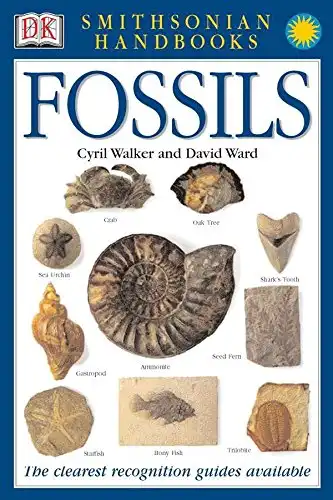Selling Your Fossil Collection
Buying, collecting and selling fossils has become big business. The internet is rife with these types of sites where both amateurs and professionals connect to share in the excitement of the latest finds.
Those who have been collecting for a while and noticing the going prices of quality specimens are jumping into the market all over the world. But before placing any fossils for sale, it’s important to ask the right questions. Some finds can raise major statutory issues, and no one wants to be on the receiving end of a legal investigation.
Read More: 15 Best Fossil Dig Sites Open To The Public
Where You Can Sell Your Fossils
There are a number of different ways that you can market your fossils to sell. The most common way to sell fossils today is through:
- Online Brokers
- Fossil Collecting Forums
- Ebay
- Online Auctions
Online Brokers
If you’re uncomfortable with providing provenance or competitively pricing your pieces, there are companies, such as Fossiland, that will assist you from start to finish with the selling process or even purchase your specimens for their own market.
Fossil Collecting Forums
Another option is to place your specimens on a contact list. A contact list is a forum where fossil hunters around the world offer specimens to trade or sell for the purpose of expanding their collections. If you join such a group, make sure you have some kind of provenance documentation, and always verify the provenance of other collectors whom you may deal with.
Ebay
It’s amazing how many fossils are offered to the general public through eBay. Yes, it seems to be true that you can find anything there. Once again, provide or demand provenance. There are a lot of charlatans out there, but selling fossils can be very rewarding when the right precautions are taken.
Online Auctions
There are also a number of fossil auction sites. This may be an especially appealing option for more valuable pieces.
Questions To Ask When Buying or Selling Fossils
1. What is the country of origin?
Since many of the collectors reading this article are from the U.S., this may seem like a moot question. However, if you’ve been buying or collecting outside the U.S., selling those fossils may fall under the limitations of foreign regulations.
Even if you’ve legally purchased a fossil while in another country, it doesn’t mean you’re allowed to transport it outside that country’s borders. Or if you are allowed to export it, you may not be able to resell it afterward. So it’s important to do your homework.
Hopefully, you have explored these regulations before daring to touch another country’s artifacts. Some countries take the removal of any type of fossilized remains very seriously as part of preserving their own historical record. So attempting to sell these fossils either inside or outside of some countries could land you in some hot water if you haven’t gone through the proper channels.
2. What is the status of the land where the fossil was collected?
In the United States, fossils you collect on your own property belong to you. You may do with them what you wish. If your finds are small plants and invertebrates, it’s not likely they’ll be questioned. Vertebrates may raise some questions, however, so you’ll want to try to have your personal dig site verified and above-board.
If your finds are from someone else’s property, get written permission to excavate there, and if you intend to sell anything, get any arrangements in that area in writing also. Legal disputes over fossil remains can be costly and ultimately end in the loss of specimens you’ve worked long and hard to collect.
Most people know they are not allowed to remove anything from national parks, Native American reservation lands, or military-owned properties. But in many states, the Bureau of Land Management (BLM) allows rockhounds to hunt, with some limitations, for their own private collections. The BLM in most states makes it clear that it is illegal to buy, sell, or trade these specimens.
3. What types of fossils are being collected?
Some countries permit the export and sale of small plant and invertebrate fossils. However, vertebrate specimens are often more rare and subject to increased regulations and limitations.
In the U.S., fossils excavated from the collector’s personal property or with permission from other private property may be sold freely as a “finders-keepers” possession. There are currently no regulations limiting the type of fossils that may be sold under these conditions, though the scientific community continues to lobby for stricter regulations to prevent the loss of potentially important finds.
Attempting to sell or trade any specimens taken from federally-held lands is illegal in the U.S., period. Failure to meet state or federal collection restrictions can mean prosecution, high fines, or even jail time. The bigger the specimen, the more scrutiny can be expected of its provenance. Learn the regulations governing federally sanctioned digs to protect yourself from legal suits.
Authenticating and Pricing Pricing Fossils To Sell
Once you have established the legality of the fossil specimen you would like to sell, the next step in selling fossils is to authenticate the piece or pieces and determine a reasonable price range acceptable in today’s market.
To begin, it is up to the seller to provide an honest representation of what is being sold. A good way to start is to provide believable provenance for potential buyers. Provenance is a documented record of a specimen’s history. In archaeology, provenance often refers directly to where the artifact was found, along with who found it and who retains custody of it.
With today’s technology, there are many ways to document fossil finds. One way is to geolocate your find site and make the location a part of written records. A quality video camera can also be an important tool for documenting finds as they happen, thus ending any questions about where and when a specimen was collected. Take quality pictures of each specimen. When you get home, properly store and label your finds so that no details will be lost.
Determining the value of a piece can be tricky. Even minute unusual features can make a huge difference to experienced collectors. Since no two specimens are alike, determining what constitutes unusual may be difficult for collectors without a degree in paleontology.
Learn all you can about the piece you want to introduce to the market. Consult professional papers and books, and don’t hesitate to ask experts for advice. There are forums online where you may find helpful tips.
For smaller, more common pieces, explore the market for current prices. This will give you an idea of how to stay competitive. It will also reveal if there is a glut of certain pieces available at the moment, which will drive prices down. Other pieces may be in great demand. Knowing the market is key if you are hoping for financial success in any market endeavor.
Final Note About Selling Fossils Online
If you’re selling online, check out the legitimacy of a number of sites before making a final decision. It may take a bit of time, but after you’ve established yourself as an honest, reliable seller, you’ll find your clientele growing and returning to you for more quality fossil pieces.
- Over 1,000 full-color photographs
- Includes over 500 different fossils
- Makes fossil identification much easier!
- 7 Of The Largest Gold Nuggets Ever Found…Ever! - December 21, 2023
- Find Gold On Your Property? Here’s Why You Should Think Twice Before Spreading the News - December 21, 2023
- The Opalized Crab Claw (And How It Formed) - September 14, 2023
- Online rock and mineral club for collectors of all levels!
- Find community with like-minded rock and mineral enthusiasts.
- Monthly Giveaways!
- Free Access to Entire Digital Library of Products (current and future products)*



